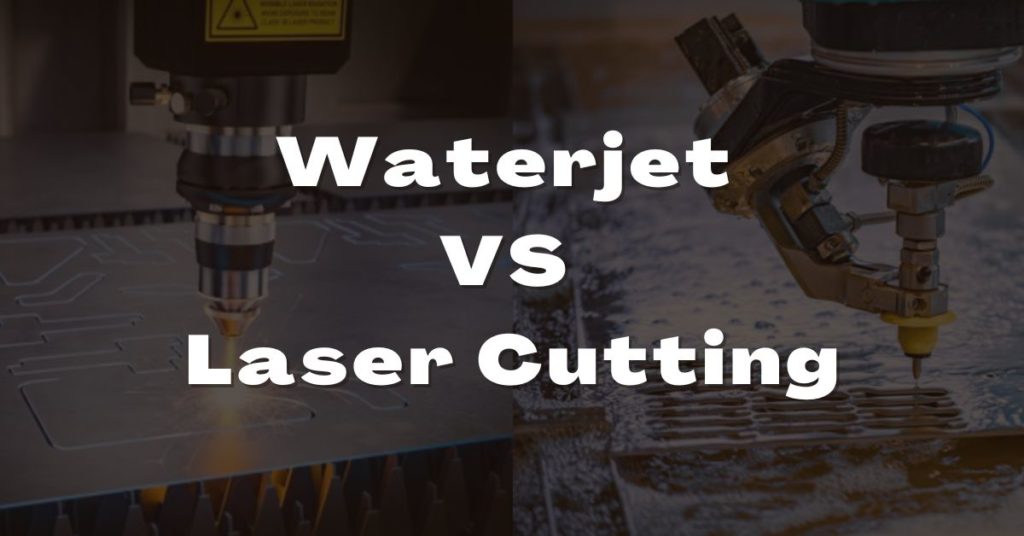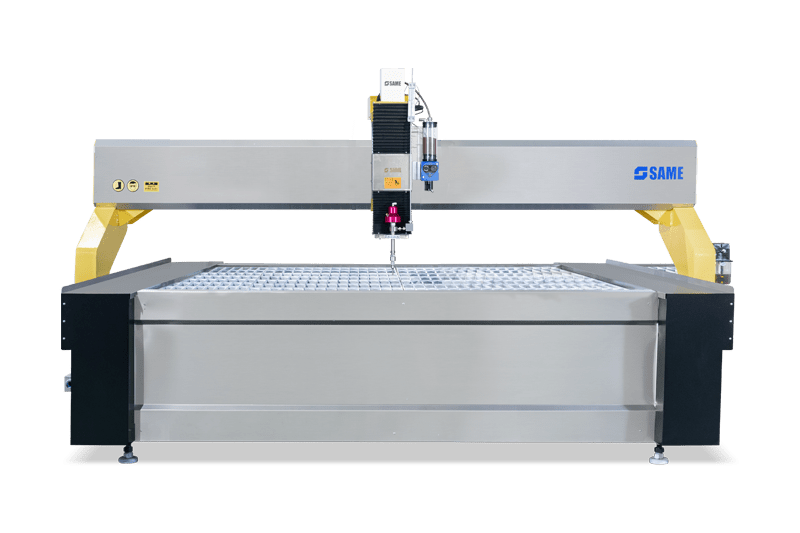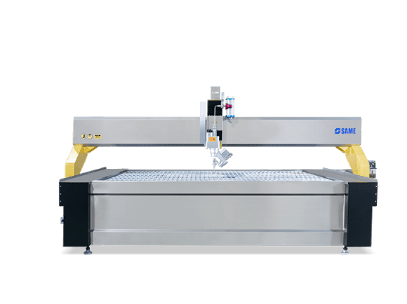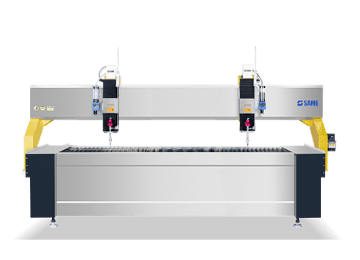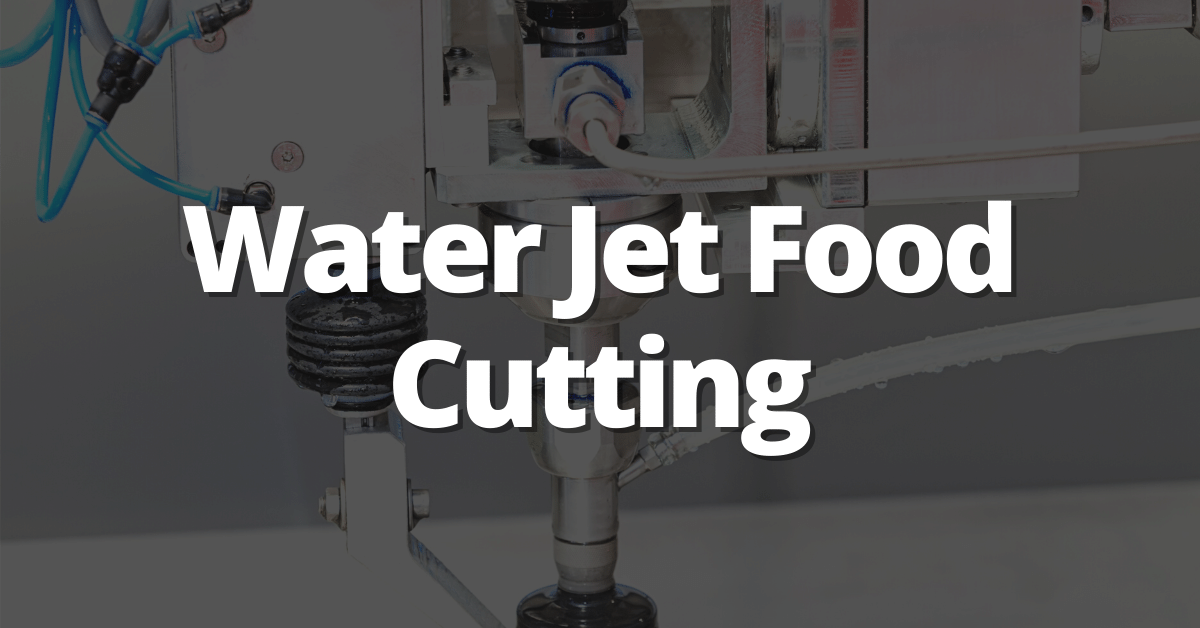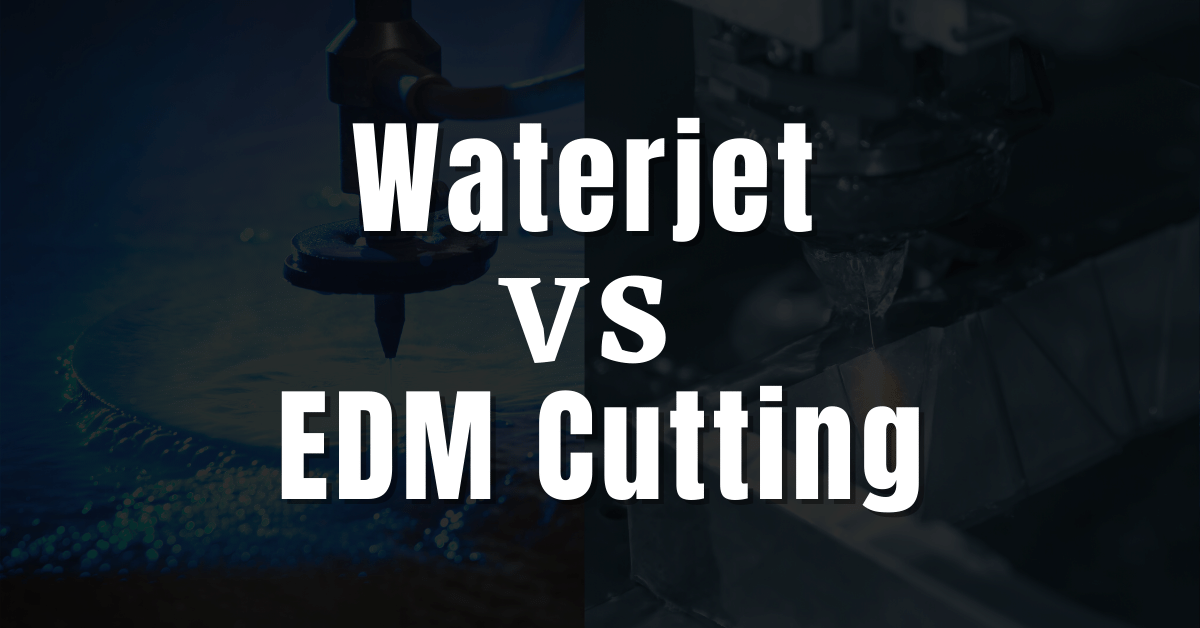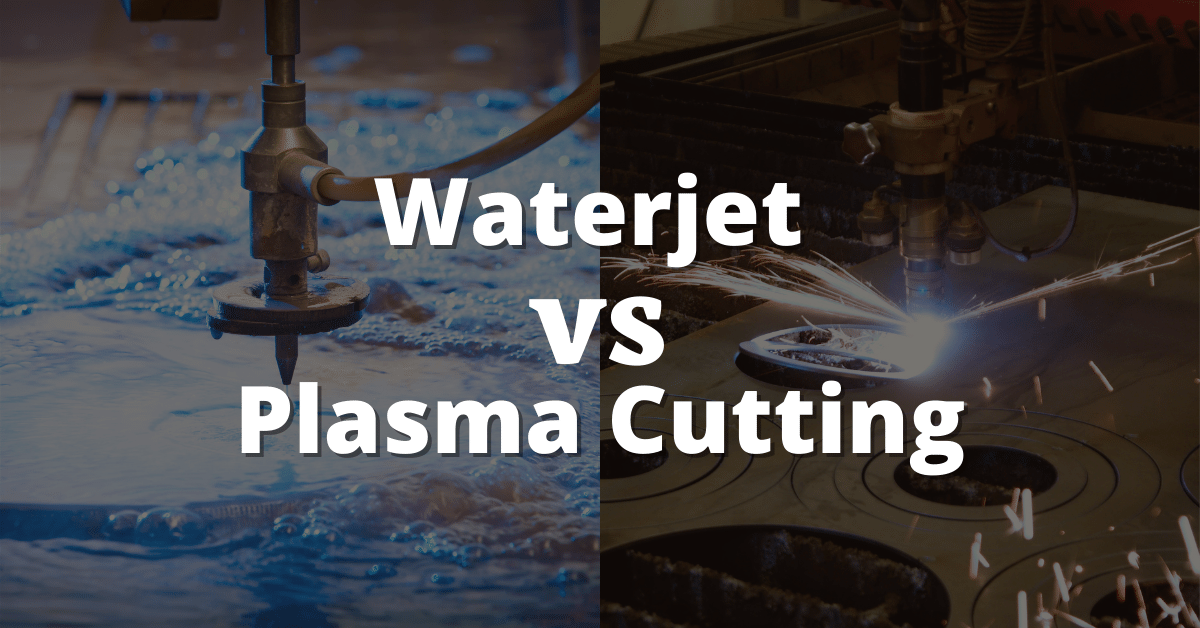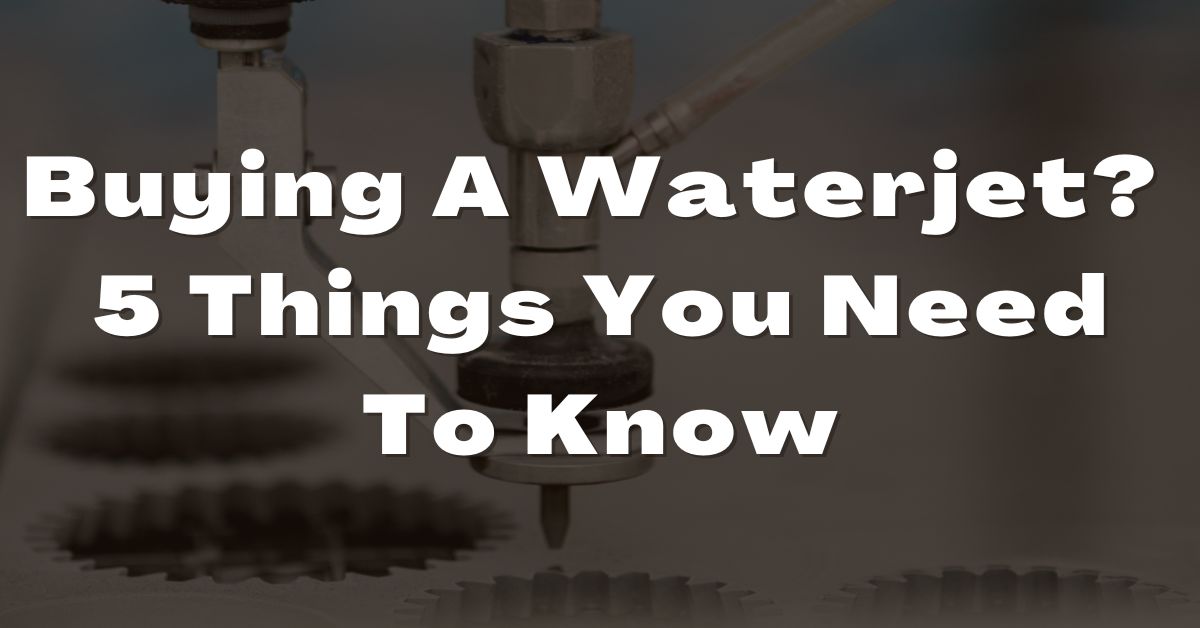Waterjet vs laser cutting – which is the best technology for cutting and shaping industrial materials? This question comes up a lot among industrial professionals before they buy a machine to fulfill their needs for cutting materials.
Although there are some significant differences between these two cutting techniques, they also have numerous commonalities. In order to choose between waterjet and laser, one must first understand the capabilities of each technology and how they differ.
In this blog post, we’ll compare waterjet and laser cutting technology along with their pros and cons to help you choose between the two. So, let’s get started!
How Does Waterjet Cutting Work?
Waterjet cutting uses a water stream to cut through the materials. The water is propelled through a nozzle at high speeds. The jewel has a hole that is about 0.010″ to 0.015” in diameter and it is used to drive water through. With a maximum pressure of 392 MPa (about 4,000 atmospheres), the water is ejected from the nozzle.
An abrasive substance such as garnet is fed into the center of the stream. Depending on the type and thickness of the material being cut, a waterjet can cut material at a relatively high speed which is stated to be around six inches per minute.
How Does Laser Cutting Work?
The laser cutting process uses a beam of light to cut through materials. First, the laser focuses on the material to be cut and heats it. Once heated, the laser breaks through the material and leaves a sharp edge with a smooth finish.
Next, the laser uses gas to blow away any remaining material. The resulting beam is produced by an electrical discharge in a gas such as carbon dioxide, nitrogen, or argon.
Lasers are so powerful that even materials like 0.5-inch (13 mm) thick stainless steel can be cut with them in 5 to 15 seconds.
Waterjet vs Laser Cutting Cost
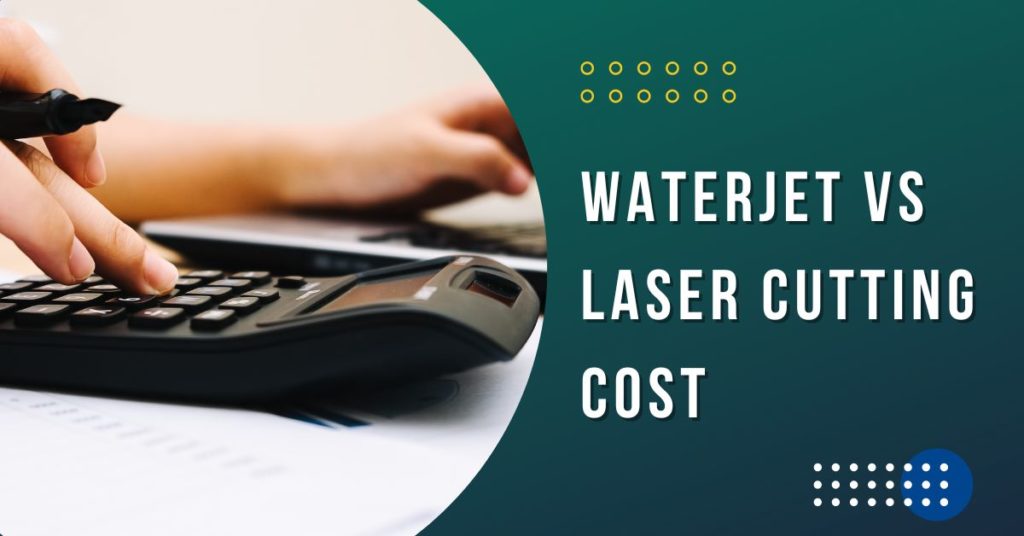
To understand the cost difference between laser cutting and water jet cutting, you need to know how they are different in terms of expenses.
Here we have listed the costs that come along with a waterjet and a laser.
1. Operating Expenses
The operating expenses are important to consider before deciding between a waterjet and a laser.
Despite being close, it could become crucial if you work on a big project. In terms of operational costs, laser cutting is less expensive. The waterjet cutting cost often ranges from $15 to $30 per hour, while laser cutting typically costs between $13 and $20 per hour.
2. Components Cost
Laser cutting is a process that uses a single tool – the laser. No other tools or components are required, so laser cutting costs you little in terms of equipment. Even the main component laser is inexpensive.
Waterjet is pricier because it uses consumables and a water pump that needs to be maintained. You will also need cutting heads, abrasive material, filters, seals, and other components.
3. Machine Cost
The cost of a machine depends on factors including the type of machine you’re interested in and the requirements of your project. In general, waterjets are less expensive than lasers because they have lower costs upfront as compared to lasers.
Waterjet vs Laser Cutting Speed
When it comes to cutting metal, both waterjet and laser technology have their pros and cons. But which one is faster?
It depends on the application. But for thicker materials, the water jet can break through the material more quickly, removing more material in less time than a laser cutter.
However, the laser is typically faster for thinner materials. In thinner materials, the laser beam can easily penetrate the material and vaporize it, cutting through more quickly.
Overall, waterjet cutting machines have a cutting speed of nearly twenty inches per minute and a laser machine can cut up to seventy inches per minute.
Waterjet vs Laser Cutting Thickness
When it comes to cutting thick materials, waterjet and laser are both viable options. But which one is better?
A waterjet cutter can cut materials with thicknesses of 0.4” to 2.0” (10 to 50 mm), while laser cutters are more commonly used for cutting materials with thicknesses of about 0.12” to 0.4” (3 to 10 mm).
Laser vs Waterjet Accuracy
Accuracy and precision are some of the biggest concerns that people have before buying a waterjet or a laser.
So, when it comes to cutting materials with accuracy, the laser takes the edge because it has a tolerance of +/- 0.005 depending upon the type of the laser. While a waterjet has a tolerance of +/- 0.03″.
Waterjet vs Laser Pros and Cons
Now let’s have a quick look at the pros and cons of waterjet and laser cutting.
Waterjet Cutting Pros:
- Offers great versatility/flexibility
- Quick & accurate material cutting
- It produces no hazardous waste
- Environmentally friendly & safe process
- Easy of usage and less downtime
Waterjet Cutting Cons:
- Starting costs are high
- Failure of the orifice risk
- Kerf and hole sizing problems
Laser Cutting Pros:
- More precise and efficient cutting
- Provide the operator greater flexibility
- Quicker in cutting than traditional methods
- Offers greater versatility
Laser Cutting Cons
- Upfront expenses
- Produces dangerous fumes
- Need of a specialist operator
Water vs Laser: What is Better?
This article is not intended to determine which is best between laser cutting and waterjet cutting, but to highlight the differences between them and help you choose which one is best for your application.
Both technologies have their pros and cons, and ultimately the best choice for you will depend on your specific needs and requirements.
Conclusion
The debate between waterjet vs laser cutting has been going on for a long time. Hopefully, this article has given you some insights into the basic differences between these two cutting methods.
However, it’s important to do your research before deciding between a waterjet and a laser. If you are having trouble choosing the one or are not sure what cutting process would be better suitable for you, don’t hesitate to contact us at SAME Waterjet for assistance.


